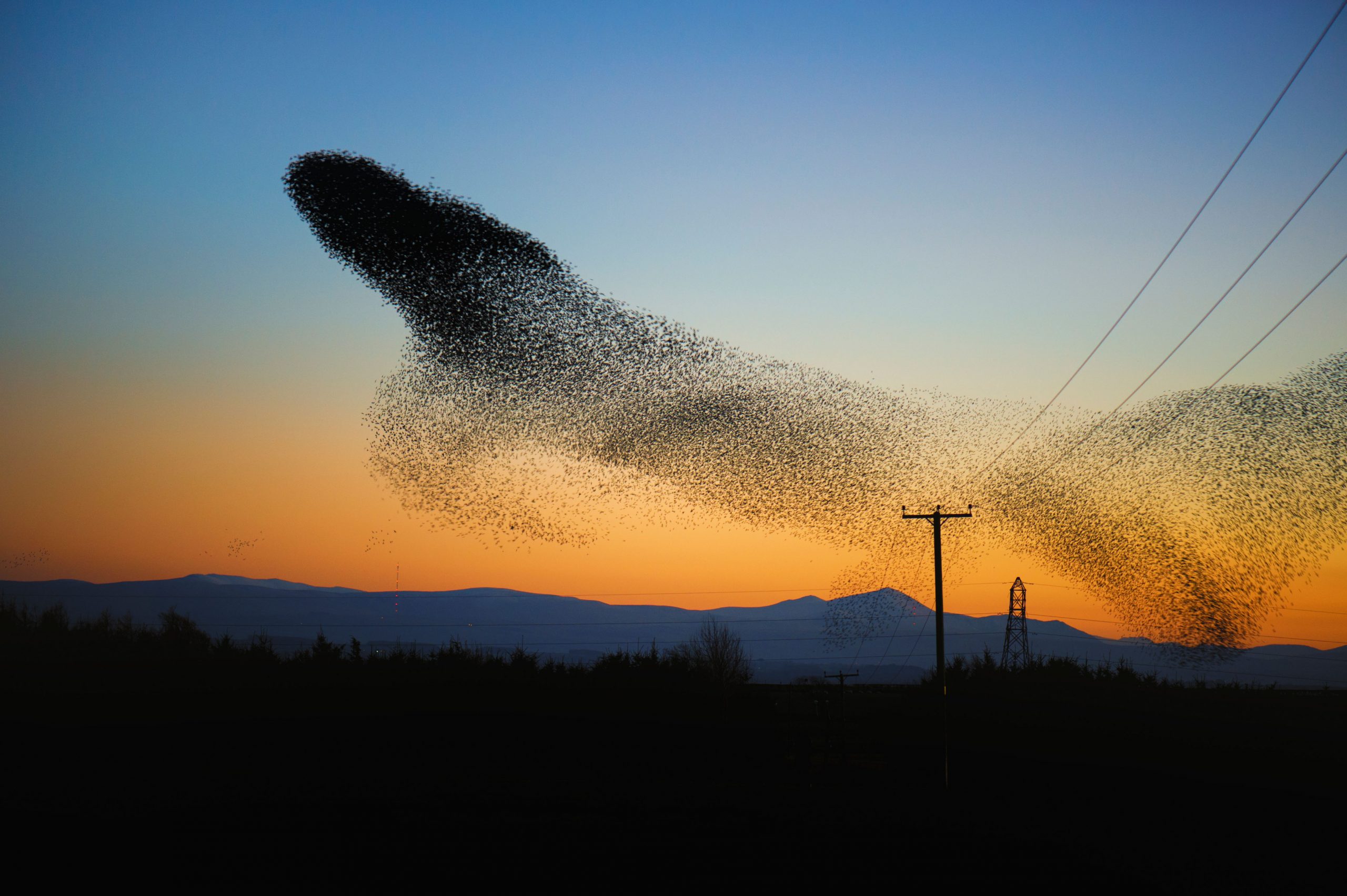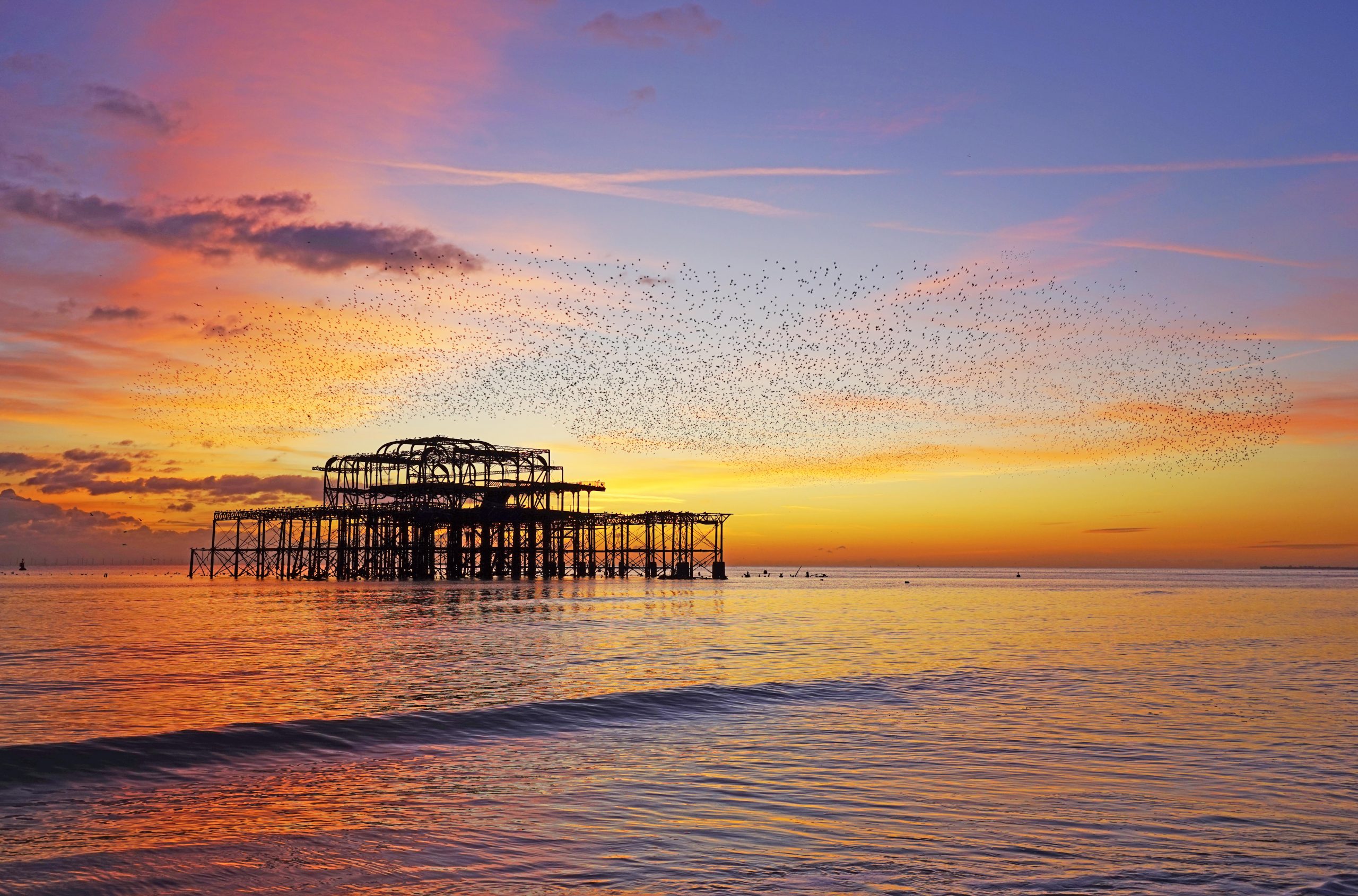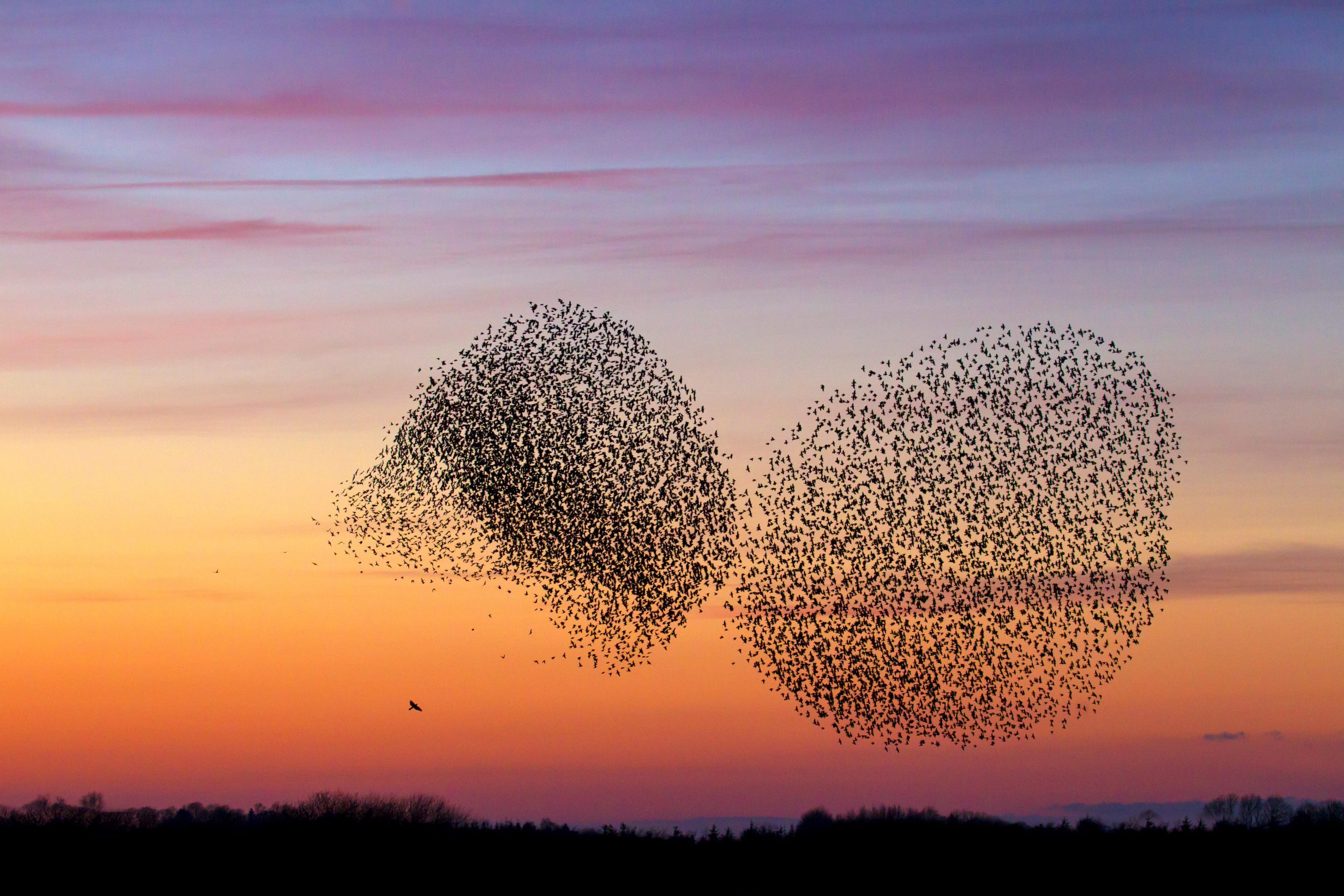Curious Questions: How do starlings murmurate?
Murmurations of starlings — the vast clouds of thousands of birds, flocking and swooping through the sky — are one of nature's great displays. But how do the birds do it? Martin Fone investigates.


There is something mesmerising, but profoundly disturbing, about watching humans moving in synchronicity, whether it be swimmers or those massed marches of service personnel that certain countries seem to specialise in on high days and holidays. The participants seem content to subvert their individuality to the common weal, but I cannot help thinking that impressive as these demonstrations are, they are little more than a reductio ad absurdum of those less formalised but equally compelling examples of movement en masse to be found in the animal kingdom.
One of my most memorable moments was watching, from a hot air balloon above the Masai Mara, the serried masses of migrating wildebeest thundering across the landscape, black ribbons of flesh stretching as far as the eye could see, with only one goal in mind, to find pastures new.
Closer to home, as a boy I was thrilled by a spectacular display of aeronautical acrobatics, once so commonplace but now, due to the sharp decline in its participants’ population, a rare treat and one to be especially savoured.
As the light dims on an autumnal or winter’s evening, starlings will rise from their communal roosting site and wheel and swoop as if one body, moving seamlessly and effortlessly out of one geometric pattern into another, seemingly under the command of a great choreographer in the sky. These stunning displays begin at the start of the starlings’ roosting season, as early as September or as late as the end of November, and can last throughout the winter.

The technical name for this phenomenon is a murmuration, which, by extension, has become the collective noun for a group of starlings. Derived from the medieval Latin noun murmuratio, meaning murmuring or grumbling, it is thought to be an onomatopoeic representation of the noise the birds make when they are in flight. While murmurations are not unique to starlings, other birds, such as geese, fly in formalised V-formations to assist in navigation, the term is especially associated with them.
Murmurations attract other starlings to the roost, the numbers seeming to grow with each outing, with birds travelling several miles to join in. Communal by nature, starlings will pack themselves in like avian sardines to a density of up to 500 birds a cubic metre.
A large roost can accommodate over a million and one of the undoubted benefits of living at such close quarters is that they are more likely to keep warmer, thus improving their individual chances of surviving the predations of winter. However, the fact that many starlings will travel miles to join a roost, expending more energy than could be conserved by roosting in a marginally warmer spot, suggests that there are other reasons behind this behaviour.
Exquisite houses, the beauty of Nature, and how to get the most from your life, straight to your inbox.

Forming swarms or balls is a well-known survival technique adopted by many creatures. Although it does not prevent predators picking off an unfortunate few, a tightly formed mass of bodies makes it difficult for them to make significant inroads into the group. It may be, then, that starlings seek safety in numbers, especially as a specific trigger for a murmuration can be the presence of an aerial predator.
More intriguingly, it is thought that starlings may form flocks so that they can exchange information, especially when food is scarce, on where the best or most reliable sources are available, although the hypothesis has not been proven.
Not everyone, though, is enamoured by the starlings’ antics. In December 2020, a string of power outages in Airth in Scotland were eventually attributed to a flock of starlings, which, as part of their murmuration routine, regularly performed a dance by bouncing up and down on the overhead cables, causing the power to trip. A classic example of one man’s pleasure causing another man’s pain.
What intrigues the curious of mind is how the starlings perform their acrobatics, moving in perfect synchrony, without bumping into each other and landing in an unseemly heap on the ground. Back in 1931 British ornithologist, Edmund Selous, in his book, Thought-transference (or what!) in birds, surmised that starlings used psychic powers to operate in a flock and avoid colliding. More recently Giorgi Parisi, from the University of Rome, has applied his deep knowledge of theoretical physics to give a more rigorous answer to the problem.
2020 might be characterised as the year of the ultracrepidarian with many of us becoming overnight epidemiologists, talking with faux confidence about R numbers and rates of infection. In reality, all that has happened is that we have gained a better understanding of basic statistical concepts, not least how numbers rise exponentially and the compound effect that even a small event, like the flap of a butterfly’s wing in chaos theory, can have on the whole. It is this understanding that we need to make sense of Parisi’s research.

In a paper published in 2010 in the Proceedings of the National Academy of Science, Parisi looked at how the speed at which one starling flew affected the velocity of the rest. He discovered that the behaviour of one animal affects and is affected by that of all the others in the group, no matter how large or small the group is. A starling changing speed will trigger a corresponding change in the speed of the other birds in the group. Acting as a group they have a wider perception range than they would have as individuals.
Drawing upon an analogy from ferromagnetism, Parisi observed that a magnet’s particles showed perfect interconnection at a precise, ‘critical’ temperature. Starlings’ murmurations were just such a critical system and were formed when conditions and group dynamics were optimal.
It took a further paper from Parisi and his team, published in 2012, to explain how a single bird could spark a change in movement in a formation that was busily responding to the actions of others and how that reaction could cause such a speedy response within the group. Rather than looking at speed, which was the focus of the earlier paper, they looked at how a bird’s change of direction could affect those around it.
What they found was that one bird’s movement affected those of just seven of its immediate neighbours, but that the movement of each of its neighbours affected a further seven in its immediate vicinity, and so on, producing a compound effect throughout the flock. The result is a twisting, ever-changing formation where some parts move at one speed in one direction and others at different speeds in other directions. When a single starling changes direction or speed, the whole flock responds through the ripple effect of the power of seven, making it appear as if the information or a command has been passed through the flock in real-time.
The result is a fascinating and thrilling spectacle and one that can be performed in relative safety. And why seven? It seems that is one of those numbers that just seems to work in nature, where the balance between individual effort and group cohesiveness is optimised.
When next I see a murmuration of starlings, I will raise my hat to the power of seven.

Collective nouns for birds
We celebrate our favourite collective nouns for birds, from the weird and the wonderful to the most curious.
After graduating in Classics from Trinity College Cambridge and a 38 year career in the financial services sector in the City of London, Martin Fone started blogging and writing on a freelance basis as he slipped into retirement. He has developed a fearless passion for investigating the quirks and oddities of life and discovering the answers to questions most of us never even think to ask. A voracious reader, a keen but distinctly amateur gardener, and a gin enthusiast, Martin lives with his wife in Surrey. He has written five books, the latest of which is More Curious Questions.
